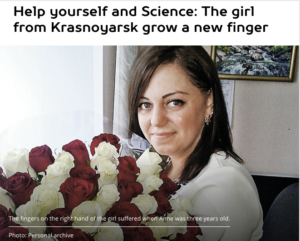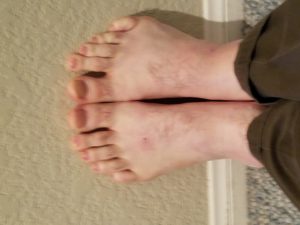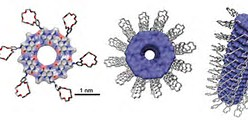In the last half a year, there have been talks among the very, VERY small online community of people hoping to become taller that two key people who used to be very active have come back. They go by the name of Alkoklar and Xcrunner211. A person who goes by the username shark2016 said that they sent an email to me to look over the information that Xcrunner211 has been talking about. So here I will do that. As for Alkoklar, I will write about him in a 2nd post, looking that his claims as well.
The person who uses that Xcrunner211 username has become quite active on the heightdiscussion.com forum, where they are now talking about a new chemical they are selling. Refer to this thread entitled “Growing Taller” – http://www.heightdiscussion.com/index.php?/topic/22601-growing-taller/
The Xcrunner debate started back in Aug 10 of 2015, where this new poster said that they are a biochemist. This person says that they have been searching for a way to grow taller after growth plate closure their entire life and he did find something that increased his height from 5′ 5” to 6′ 2”. He claims that he has helped people in their 30s grow 3-4 inches.
Quote… “There is no such thing as fused plates there is always a height potential regardless of
age(potential surely diminishes with aging but never runs out)once the puberty-like hormone and somatropic peptide profile is sustained, you will grow again“
He says that he has not been active in the online grow taller community because of something that happened in the old growtaller forum, which existed years ago.
In the past he has claimed that Ghenerate in spray form works to increase GH production, but only effective in a 1 time form after the growth plates are gone. He has also used BMP7, IGF-1 Induction, Osteogenic Protein 1, GDF4, Methyprotodioscin, and Icariin.
Let me list a bunch of mistakes he has made in his thread posts.
Mistake #1: He mentions BMP7 and OP1 as two chemicals he has used, but he didn’t realize that they are the exact same chemical. OP1 is another name for BMP7.
Mistake #2: He says that the growth plates never close but become inactive. That is incorrect. Any person working in a medical imaging department in the field of radiology would tell you that there is no sign of any layer of growth plates left.
Note #1: That Ghenerate spray seems to have been discontinued and no longer available.
Medical Fact: In fact, if he actually knew how the process of endochondral ossficiation and condrocyte condensation worked, he’d realize that the “growth plate” is not an actual body part per se, but actually a zone of unossified cartilage that is between the primary ossification center and the secondary ossification centers, as those 3 areas of bones (yes 3, not 2) get progressively bigger in comparison to the overall osseous-chondrogenic tissue.
He mentions that women during pregnancy sometimes grow taller, which is something which we reported years ago, and have reported multiple times since, so it is clear that this xcrunner person reads our website, since it is the most authoritative site on the english public domain.
Mistake #3: In a post he made back in June 15, 2016, he has claimed that “Everyone I supplied to so far grew”. That goes against what he would write in a later post, claiming that his formulation of chemicals won’t work for everyone.
He keeps on claming that customs have been seizing his shipments, which is something reasonable to believe, since that is what happened to my order of Modafinil years ago when I ordered some from this India based chemical production company. If you guys are interested in reading about my experience there, search the website’s sidebar on my older monthly posts.
The cost of his chemicals: “A bottle will cost 6000”. (So are we talking about 6000 USD or what other currency?)
He claims that his bottles has enough compound to last 25-30 days, and should produce 3 inches of height increase and a max of 5 inches.
Quote… “As of now i am already blacklisted by customs officials and If i try fighting them..its a lost case for me as it is illegal for me to sell this formula. Its against fda and goverment trade laws. I received my third letter today from customs officials saying i must stop sales of the formula and go through standard fda laws and patent procedures but its a setup for them to bust me”
Commentary: First, one does not get blacklisted by custom officials. That is not how it works with custom officials. They don’t blacklist seller or people, they blacklist chemicals and stop chemicals from reaching the intented customer. This chemical,, which is supposed to be new, would not be listed by the US government or the DEA as any type of class A type of illegal drug. Plus, it was quite easy for that India company selling me Modafinil to get around the customs official by just putting a different chemical name on that package. Please be aware that the customs people have to look through thousands of boxes each day and they are not going to open all thousand boxes and check inside each to make sure that the chemical that is claims is what it actually is. There is no chemical ID machine in the customs official’s office.
Quote… “My last words is for anyone thinking on taking on height increase research..all you gotta do is study op 1 protein and all the bmp proteins and its dna components then figure out how it differentiates into mesenchymal stem cells of the inactive growth plates then BAM! height increase resumes full force… Its all about restoring somatropic protein profiles and properties that occurs naturally during puberty but keep in mind though that if this is done wrong it can cause CANCER instead and no height growth!”
Commentary: There are so many mistakes that this guy is making, on so many levels that I don’t even know where to begin. Like I said before, OP1 is BMP7. BMP7 has been shown to have the most chondrogenic potential when used on mesenchymal stem cells to turn towards the chondrogenic side, on par with BMP2.
Plus, BMP7 is a protein, and not a cell, so it doesn’t have any DNA component. It is not a organism, or alive, so it doesn’t have any cells. Only when there is an organism of some type, could there be any DNA, (or maybe RNA if it is some type of primitive prokaryotic cell which even I don’t know much about yet). Again, BMP7 does not have any DNA component.
Third, there are no inactive growth plates, but dead growth plates. There are no more chondrocytes or cartilage tissue where the growth plate zone used to be to use the chemical on. Where that zone used to be, there is now just a thick layer of cortical bone, and inside that layer is trabecular bone, and in between the super-strong hard inorganic trabecular bone maze is where the yellow-colored bone marrow are, which does have some adipose-derived mesenchymal stem cells.
One person who has decided to commment and sort of argue with Xcrunner is a poster calling themselves Jacob Walker. This Jacob Walker has contact me and the NHGH website email multiple times, and have been sincere and honest in his desires, and he has claimed that he has learned about the biology of bones and become very knowledgeable. I have messaged Jacob many times, and he has been very helpful.
Jacob did somehow get Methyl protodioscin and injected it into his leg to see the effects, and he talked about his leg being in extreme pain for weeks and developing tendonitis. He sent me a email saying that he put himself as a guinea pig, and the results were really bad.
At some point, other posters came in and started to throw in various biochemistry concepts in and talked about a little bit of everything, with no one able to integrate and make sense of what all of the biochemistry talk was about. That is expected, since I would assume that few people have ever taken a University level Biochemistry class before. Even though I did myself, I got a B- in that class, and 10 years later, I remember almost nothing from that class except for the beginning and ending compound of the Kreb/Citric Cycle.
Here are a few of the technical points which I agree with
- Methylation of the DNA is really just adding the chemical Methyl Group (CH3) only certain parts of proteins, which in this case is the very DNA itself. I am not sure if adding methyl groups to the very DNA is even possible, since I did not read much on that subject.
- There are some chemicals like Noggin, and Ghrelin, which are inhibitors to any of the BMPs. There are probably hundreds of proteins and chemicals in our bodies which do that which I am not aware of.
This Jacob Walker person has said that they have learned about the cell pathways and how cells transmitt information to each other. He talks about the concept of transdifferentiation, but I think he made a mistake in using this term, because the process of transdifferentiation is extremely rare, at least for the purpose which we want for it. Maybe he was talking about the few studies showing how mesenchymal stem cells, when stimulated turn into fibroblasts, and then those fibroblasts turn back into mesenchymal stem cells, or into osteoblasts.
There is a highly technical post Jacob wrote on Oct 22, 2016 which he really got into the biochemistry of the cell pathways which I don’t understand at all. I don’t know what the various types of Smad proteins do. I am aware that the Noggin and the Chordin are inhibitors to BMP and TGFBeta, respectively. He claims that the compounds Smad-6, Smad-7, and I-Smad are all types of chemicals which can inhibit R-Smad and Co-Smad. That I can not validate. There are a lot of chemistry and biology stuff I just never learned in detail, or at all.
Here is a really good clue why this entire thing is a scam, which would be very obvious. The username Dmitri Petronova, wrote in the post from Oct 25, 2016 the following sentence… “And I have friends who post here as well. Most of them are foreign like me and we are aspiring to become medical students and we all have interest in this topic. When I post, I tell my friends and we all post and this is why you see only minutes away from our posts….I share my apartment with Liu Xian, Yong Shin, and Haruda. All of them want to become medical students”
Commentary: So 1 of the possibly only 12 posters on this thread has admitted that three of the other posters on this exact same thread are his roommates???
Isn’t that suspicious??? Even if I was 15 years old, never took a biology course, never researched this topic and no nothing about biochemistry, and was still naïve, it would still seem to me, with average intelligence that this is a HUGE COINCEDENCE.
Conclusion: I remember an email that Jacob Walker sent me months ago where he showed me a screenshot of an email he got back from this Xcrunner guy. If you guys search through my posts of the last 6 months, you might even find that picture somewhere. (type “Jacob” or “Xcrunner” into the search bar on this site to search for that older post. Too lazy to go find it and link to it.)
It is quite obvious that this person saying that they are xcrunner211 has probably created at least 5 new forum profiles, all of them validating and social proofing the xcrunner211 username, saying to the other posters to give the guy a chance and why he is not a scammer.
I would say that shark2016 and jacob walker might be the only 2 usernames on there which post regularly and who are not in on the con. (remember the British show “The Hustle” where 3 people work as a team to cheat the “mark” aka target. Ever hear of the term “Shill” used in Vegas streets by street pick pocketers? They are all accomplices, but in this case, I suspect there is not 5 people working together, but 1 guy who created 5 different accounts to validate 1 account. )
If Yong Shin, Haruda, and Dmitri are roommates, why would they write to each other on a online forum ,when they can just walk across the apartment they share and just ask in person?
No matter what however, at least 1 person is lying, because based on all the claims made by the posters, somewhere there is a clear logical contradiction, which even they should be aware of.
Remember this fact: When a criminal who has lied about something has a story that is too elaborate and complex, a very quick and intense interrogation by the police with some smart questions will make the lies quickly unravel. Complicated multiple lies are easy to spot, since eventually all the lies and claims start to become logically inconsistent.
So to you shark2016, and Jacob Walker, I side with you guys. You are right. Those 5 (maybe now 6, 7?) are like a high school bully team all ganging up on you guys, trying to pressure you guys using social peer pressure to not talk about your scepticism. Stay strong.
As for you shark2016, probably all the following usernames/profiles are fake, Liu Xian, Yong Shin, and Haruda, Dmitri Petronova, Jose, etc. (or at least all created by 1 person)



